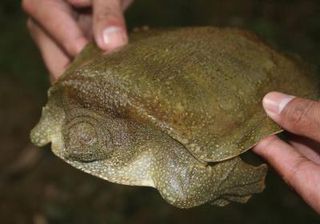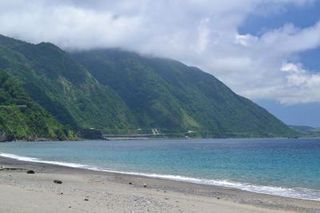
A misty mountain range on the Philippine island of Luzon boasts more than 100 species of reptiles and amphibians, according to a new catalog of the region's species.
On the entire island, more than 150 reptile and amphibian species exist.
The catalog, published Wednesday (Feb. 7) in the journal ZooKeys, is the first for the remote region, known as the Sierra Madre Mountains, which lies on the Northeastern portion of the island. The study reveals that the region may be a hidden hotspot for biodiversity.
The study combined data from several extensive surveys done over the past years, as well as an exhaustive search of all historical museum records.
The team found over 29 amphibians, 30 lizards, 35 snakes, five turtles, and two crocodilians.
For instance, they catalogued a frog called Platymantis cagayanensis, which sports yellow upper irises and calls ("tuk-tuk-tuk") from understory vegetation immediately following rain. Other characters tallied included a colubrid snake (Hologerrhum philippinum) with vibrant-yellow skin decorations, and the bizarre soft-shell turtle, Pelochelys cantorii.
Also, pale-colored frogs, called Rhacophorus appendiculatus, were found in high-elevation forests in the crater of Mt. Cagua.
Sign up for the Live Science daily newsletter now
Get the world’s most fascinating discoveries delivered straight to your inbox.
Most of the species are native to the island, and a full 38 percent of them can't be categorized taxonomically, the researchers wrote in the paper. That suggests at least some may be completely new species.

Protecting those species "remains an on-going effort, challenged by rapid development, large-scale extractive logging and mining industries and conversion of natural habitats into agricultural lands driven by a burgeoning human population," the researchers write in their paper.
In addition, some of the areas that have been least studied lie next to populated areas, so cataloging species diversity there should be a top priority, the researchers write.
Follow LiveScience on Twitter @livescience. We're also on Facebook & Google+.

Tia is the managing editor and was previously a senior writer for Live Science. Her work has appeared in Scientific American, Wired.com and other outlets. She holds a master's degree in bioengineering from the University of Washington, a graduate certificate in science writing from UC Santa Cruz and a bachelor's degree in mechanical engineering from the University of Texas at Austin. Tia was part of a team at the Milwaukee Journal Sentinel that published the Empty Cradles series on preterm births, which won multiple awards, including the 2012 Casey Medal for Meritorious Journalism.